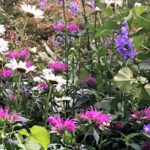package seeds
Refine the task of collecting seeds, especially if you are planning on giving them away to friends and family or participating in seed exchange programs. Making packaging an integral part of seed collection encourages you to be more organized and makes it easier to find what you need in spring.

This is a nice task to give kids, since they are excited about creating little projects. Here are a few photos of packets that my daughter made for seeds harvested this year. The seeds are organized by annuals, biennials and perennials and the packets are easy to open to add some more seeds as they become available.
Make sure to label the packets with the family, species and color of the plant, whether it is annual or perennial, and what color it is, as well as the date the seeds were harvested. This may seem like overkill to some, but everyone who harvested seed heads from purple and pink bee balms, for instance, knows that there is no way to tell the color after the petals fell off. So if you are excited about planting white zinnias, you will not get the “mixed color border of the wrong height” next year.
Besides the advantage of knowing what seeds you have and where they are, the packets make for a nice conversation piece when you give them away, and the kids can turn the seed box into a mini science project to show off at school.

As you get more packets and more plant seeds the information on the labels can be expanded to include the botanical names (which give great insight into what plants are from the same family and therefore have similar needs and qualities), spacing and care requirements, whether the plants like the sun or the shade, and how they performed in your garden the previous years.
Packets with detailed information are especially useful if you like crossing different cultivars to get new plant varieties.




 Next Post
Next Post




